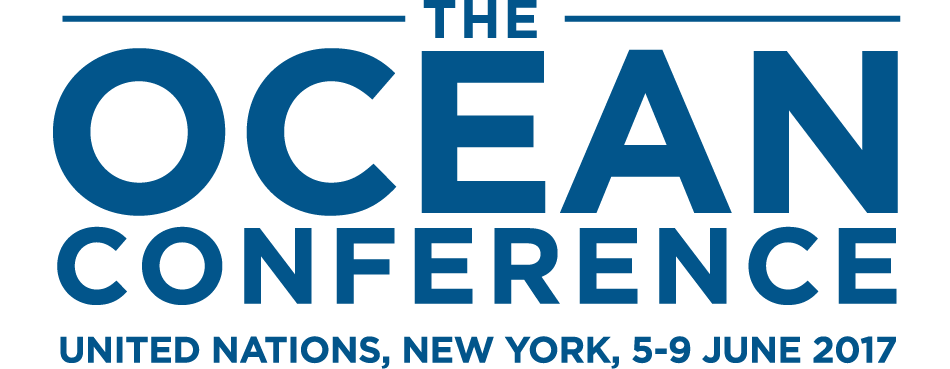Daily report for 3 July 2018
22nd Meeting of the Subsidiary Body on Scientific, Technical and Technological Advice (SBSTTA 22) and 2nd Meeting of the Subsidiary Body on Implementation (SBI 2) of the Convention on Biological Diversity (CBD)
SBSTTA 22 continued Tuesday in Montreal. Delegates engaged in discussions on the following agenda items:
- Updated scientific assessment of progress towards selected Aichi Biodiversity Targets and options to accelerate progress;
- Protected areas and other measures for enhanced conservation and management (OECMs); and
- Marine and coastal biodiversity: ecologically or biologically significant marine areas (EBSAs), addressing anthropogenic underwater noise and marine debris, biodiversity in cold-water areas, and marine spatial planning.
A contact group on risk assessment and risk management of living modified organisms met in the evening.
Updated scientific assessment of progress towards selected Aichi Biodiversity Targets
The Secretariat introduced relevant documentation (CBD/SBSTTA/22/5, INF/5, INF/10, INF/23, INF/26, INF/30, INF/31, INF/32, INF/34, and INF/35).
Mark Rounsevell and Sonali Senaratna Sellamuttu, Co-Chairs of two of the Intergovernmental Science-Policy Platform on Biodiversity and Ecosystem Services (IPBES) regional assessments, explained that biodiversity is declining and the Aichi Targets will not be met given current trends, and outlined policy options for achieving the targets.
Nichole Barger, Coordinating Lead Author of the IPBES land degradation assessment, noted land degradation is a pervasive, systemic, and worsening issue. She pointed to options for halting land degradation and restoring degraded land.
Many delegates lamented the lack of progress on halting biodiversity loss, and called for additional efforts. NEW ZEALAND, the UK, SWITZERLAND, INDIA, UGANDA, and JAMAICA called for stronger wording to urge parties to accelerate implementation efforts.
ECUADOR, ZIMBABWE, GUATEMALA, PERU, and MOROCCO stressed the need to improve access to financial and technological resources. MOROCCO and JORDAN called for capacity building. CAMBODIA underscored that most national targets and National Biodiversity Strategies and Action Plans (NBSAPs) were not as ambitious as the Aichi Targets and, with CANADA, SWEDEN, and NEW ZEALAND stressed the need to focus on the least achieved targets.
BRAZIL, supported by PERU, proposed parties focus on conserving the most significant areas for biodiversity. Serbia, for CENTRAL AND EASTERN EUROPE (CEE), called for filling regional knowledge gaps identified in the IPBES assessments.
Cameroon, for the AFRICAN GROUP, with Austria for the EU, PERU, and GUATEMALA, highlighted the need for specific guidance on how to take up the findings of the assessments and, with UGANDA and JAMAICA, called for support for national level assessments. PERU called for providing more detailed guidance on options to accelerate progress on the targets.
CANADA and NEW ZEALAND noted that the analysis of progress towards achieving the Aichi Targets should be addressed by the SBI. AUSTRALIA said options for progress towards implementing the Aichi Targets should take into account national circumstances.
SOUTH AFRICA emphasized the lack of adequate data to report on progress and the need for social science assessments. BOLIVIA called for the recognition of different methodologies for assessing the value and functions of biodiversity.
FINLAND proposed referring to the IPBES outcomes in the draft recommendations. CHINA and the EU suggested annexing the options for accelerating progress to the draft decision.
The EU suggested inviting the Secretariat to analyze the IPBES outcomes in preparing the post-2020 framework. CHINA, FRANCE, BELGIUM, and FINLAND called for greater coordination with other international processes, including the 2030 Agenda for Sustainable Development.
The International Indigenous Forum on Biodiversity (IIFB) suggested taking note of information gaps related to socioeconomic, indigenous and local knowledge, and making use of information in local biodiversity outlooks. WWF suggested valuing biodiversity in relevant development and economic decision-making.
The Global Youth Biodiversity Network (GYBN) proposed a short-term plan of action to enhance implementation, urging progress on those targets lagging behind. IUCN and Birdlife International underscored the need for a concrete action plan towards the Aichi Targets.
IPBES highlighted that it is currently finalizing its global assessment on biodiversity and ecosystem services, inviting parties to provide feedback.
A conference room paper will be prepared.
Protected areas and other measures for enhanced conservation and management
The Secretariat introduced relevant documentation (CBD/SBSTTA/22/6, INF/6, and INF/7).
Austria, for the EU, supported by NORWAY, called for more clarity on the guiding principles, and, with JAPAN and the UK, said they should be applied flexibly and on a case-by-case basis. GUATEMALA, supported by ECUADOR, stressed the importance of acknowledging complementary conservation measures, especially those implemented by indigenous peoples and local communities (IPLCs). MALDIVES suggested expanding the definition of OECMs to include economic in addition to cultural and spiritual values. AUSTRALIA, INDONESIA, and the FEDERATED STATES OF MICRONESIA called for flexibility to align with national circumstances. AUSTRALIA and the UK proposed a greater recognition of the role of IPLCs. SWITZERLAND highlighted that OECMs can help increase connectivity between protected areas, and called for clear definitions of in-situ conservation and the positive outcomes that OECMs should deliver. FRANCE, supported by the UK, proposed that the COP adopt the definition of OECMs and take note of the guidelines and criteria.
Many parties called for capacity building to support protected areas’ governance. NEW ZEALAND said the proposed guidance strikes a good balance between flexibility and promoting integrity in reporting. SOUTH AFRICA suggested “inviting” rather than “urging” parties to apply the guidance, since it is voluntary. INDIA suggested, with BELGIUM, that the criteria for identification of OECMs should reflect long-term management considerations and noted, with FRANCE, that cultural and spiritual values may not be applicable to all OECMs.
BELGIUM, with the UK, highlighted that the role of OECMs is complementary to protected areas. FINLAND asked for additional clarity on the definition and distinction between protected areas and OECMs. MEXICO emphasized the need to ensure the recovery of degraded ecosystems.
CANADA supported the proposed definition, guiding principles, and criteria, and, with MALAWI and the SEYCHELLES, noted they should be applied flexibly. GERMANY lamented that despite the increase in number and size of designated protected areas, quality is a concern.
The REPUBLIC OF KOREA drew attention to military lands and waters, and invited parties to support a dialogue for transboundary cooperation mechanisms. Georgia, for the CEE, underscored the importance of the voluntary guidelines to integrate protected areas and OECMs into a wider land- and sea-scape.
BOLIVIA stressed the need to integrate socioeconomic objectives in management of protected areas and OECMs. SWEDEN stressed the importance of OECMs for the preservation of areas under the management of IPLCs and beyond national jurisdiction.
SRI LANKA and MALAWI supported sharing case studies and best practices.
BRAZIL stressed the importance of maintaining the voluntary nature of the guidelines and that the list of criteria should not be considered exhaustive and be applied on a case-by-case basis.
JAMAICA highlighted the definition of OECMs should also take into account the positive effects on ex-situ conservation, and called for flexibility in applying the identification criteria according to national circumstances.
UNEP encouraged parties to consider OECMs in the context of the Regional Seas Conventions. FAO welcomed the recognition of OECMs as an opportunity for cross-sectoral engagement on biodiversity conservation, which should include small fishing communities.
IUCN expressed its readiness to support parties in interpreting and implementing the guidance on OECMs, and invited parties to contribute case studies to the Panorama web platform. MedPAN pointed to the role of regional networks in consolidating national efforts to protect marine biodiversity.
GYBN called for increased recognition of IPLCs and, in particular, women as custodians of natural resources, including in NBSAPs. ICCA CONSORTIUM called for reflecting the recognition of IPLCs and women as “rightsholders, not mere stakeholders.”
A conference room paper will be prepared.
Marine and coastal biodiversity
Moustafa Fouda (Egypt), Chair of the Advisory Group on EBSAs, reported on the first meeting. He noted that the group held fruitful discussions on, inter alia: the relevant EBSA training manual; the recognition of traditional knowledge in the description and identification of EBSAs; approaches for improving the functionality of the EBSA repository and information-sharing mechanisms; and identification of short- and long-term areas for further work.
The Secretariat introduced relevant documents (SBSTTA/22/7 and Add.1, and 19 information documents).
The REPUBLIC OF KOREA reiterated his proposal from COP 13 for a peer-review system to improve the EBSA process.
DENMARK stressed that identification of areas against the EBSA criteria does not imply management requirements. GREECE called for deleting mentions of “monitoring” as well as of the concept of “EBSAs at risk.”
DENMARK, FRANCE, BRAZIL, GREECE, the UK, and JAMAICA stressed that the modification of existing EBSAs and the identification of new ones must respect the sovereign rights and jurisdiction of coastal states.
GREECE called for acknowledging the central role of the UN Convention on the Law of the Sea (UNCLOS) as the legal framework regulating activities in the ocean, and, with JAMAICA, taking into account ongoing discussions in the marine biodiversity beyond national jurisdiction (BBNJ) negotiations.
CHINA cautioned that the process for modifying EBSAs and identifying new ones should continue to be rigorous. INDONESIA and others stressed the need for transparency in defining EBSAs.
JAPAN, SWEDEN, FINLAND, and JAMAICA called for further streamlining the options for EBSA modification and description, and for simplifying the process. COSTA RICA, MALAYSIA, JORDAN, the MALDIVES, and the SEYCHELLES called for further capacity building.
BELGIUM supported a flexible and cost-effective modification procedure. COSTA RICA and FINLAND supported defining criteria to differentiate between minor and major modifications.
BRAZIL requested to circulate their proposal on distinct methodologies to be applied for the modification and identification of EBSAs according to whether they fall under jurisdiction of one state, within the jurisdiction of multiple states, beyond national jurisdiction, or both within and beyond national jurisdiction.
SINGAPORE supported the proposal that one or more relevant states can seek modification of existing EBSAs, with JAMAICA noting that this should be done in consultation. NEW ZEALAND stressed the importance of promoting transparency, objectivity, and data-driven analysis, and said adjacent states should be given notice of modifications to EBSAs in areas beyond national jurisdiction. INDIA stressed the need to consult coastal states on transboundary EBSAs.
FINLAND called for defining the “regional expert networks” to be consulted as part of the EBSA process.
Many parties called for the recommendation to include references to previous decisions and work on other marine issues, inter alia underwater noise, underwater mining, and biodiversity in cold water areas, and called for increased attention to the issue of marine debris, especially micro-plastics.
MEXICO stressed the importance of mainstreaming biodiversity concerns in the fisheries sector. SWEDEN, JAPAN, the SEYCHELLES and the REPUBLIC OF KOREA highlighted the Sustainable Ocean Initiative (SOI). Turkmenistan, for CEE, and MOROCCO welcomed capacity building and partnership activities through the SOI.
The UN Division for Ocean Affairs and the Law of the Sea presented recent advances on the development of an international legally binding instrument under UNCLOS on BBNJ.
UNEP underscored collaboration with the CBD and FAO on a global dialogue with regional seas and fisheries organizations.
IIFB suggested that IPLCs should be able to propose new EBSAs to the relevant state and the CBD Secretariat.
The Chair established a contact group facilitated by Moustafa Fouda.
In the Corridors
In plenary, the Global Youth Biodiversity Network (GYBN) called on governments to stop the vicious cycle of setting targets but failing to meet them. They reminded delegates that in 2009 former CBD Executive Secretary Ahmed Djoghlaf pledged that the mistake made in adopting the 2010 Biodiversity Target without identifying the means of implementation would not be repeated at COP 10 in Nagoya, when the Aichi Targets were adopted. Yet, the IPBES assessments presented in the morning show that the measures implemented so far are not always in line with the ambition of the CBD Strategic Plan. The GYBN statement echoed the concerns of many in the room, who warned that the clock is ticking and concrete action is needed to address the obvious deficiencies of the global response to biodiversity loss.
-->
Specific funding for coverage of the Ocean Conference - June 2017, has been provided by the
XXX, XXX, and XXX
-->
IISD Reporting Services is a division of the International Institute for Sustainable Development (IISD).
Earth Negotiations Bulletin (ENB), ENB+, and Knowledge Management for Sustainable Development
are branches within IISD Reporting Services.
© 1992-2018, IISD Reporting Services. All rights reserved.







